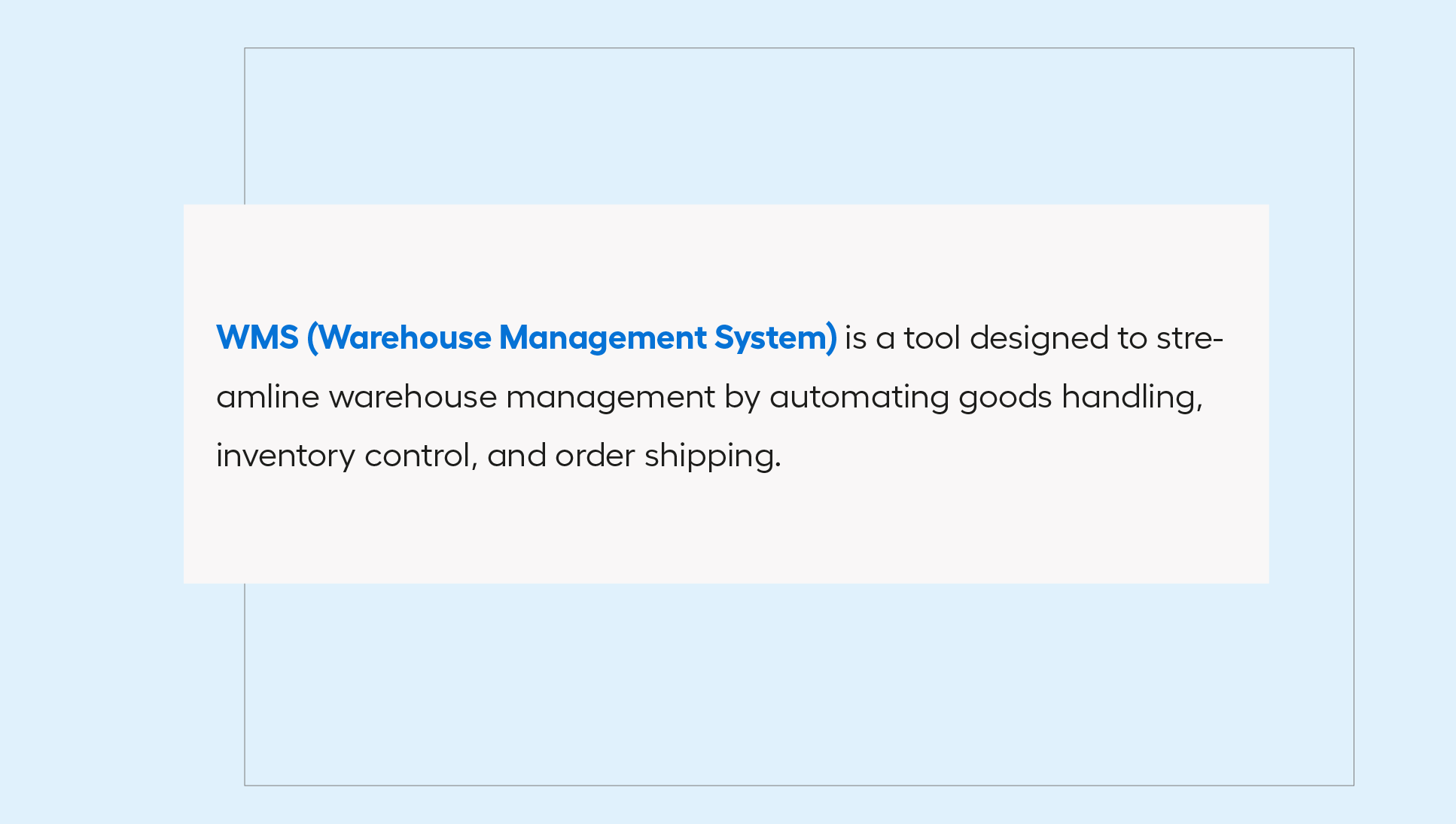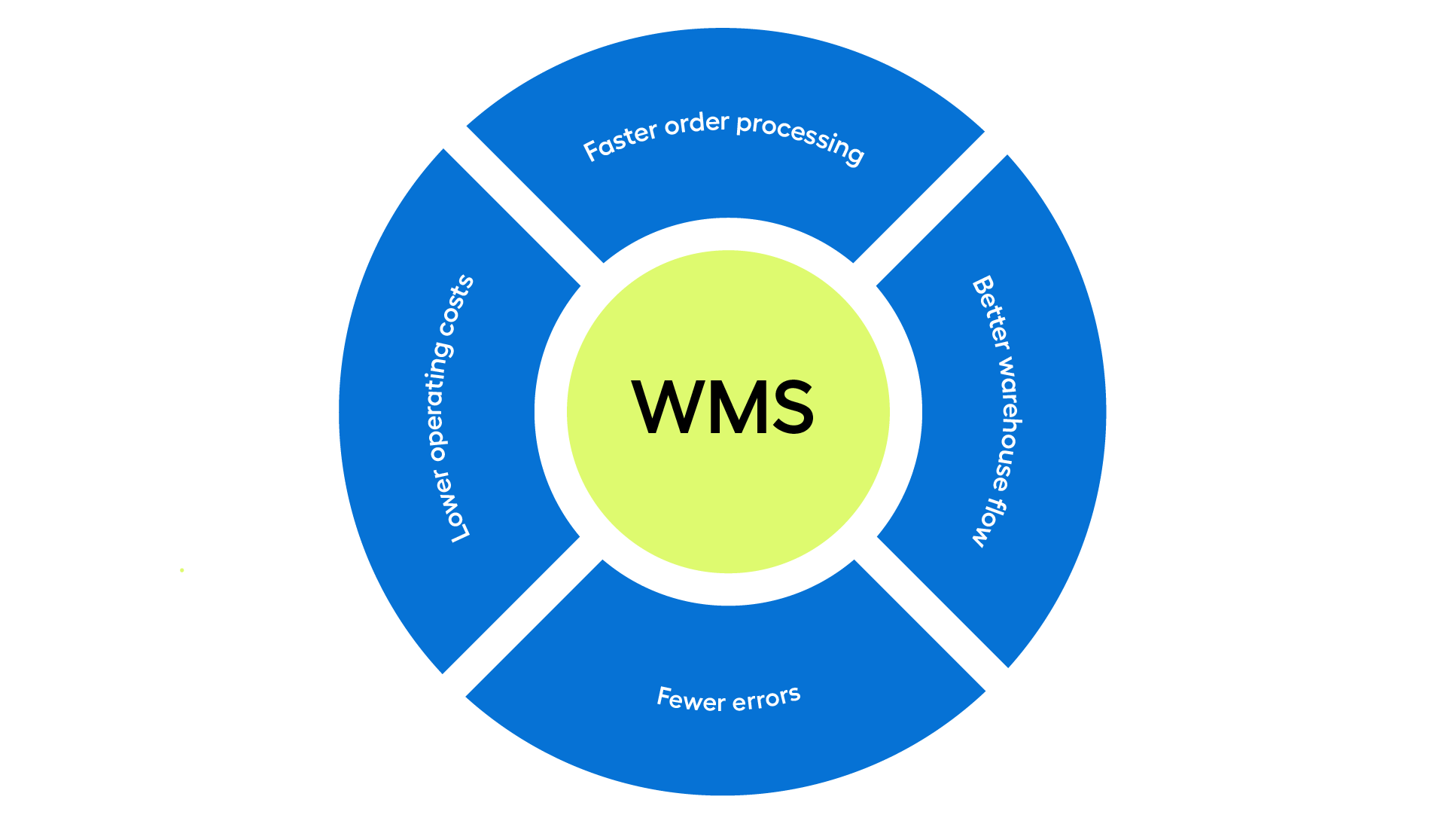WMS for eCommerce - what do you need to know about Warehouse Management System?
Table of contents:
- What is a WMS system?
- How does a WMS work?
- Does my eCommerce business need a WMS?
- WMS system = real benefits for eCommerce
- Implementing a WMS system – how long does it take and what does it cost?
- Which WMS system should you choose?
- Warehouse Management System – a key to eCommerce success
The largest online stores process hundreds of orders every day – each one needs to be packed quickly, accurately, and without mistakes. But this logistical challenge isn’t exclusive to industry giants. Sooner or later, anyone selling online faces the problem of managing orders efficiently. How can you streamline this process and avoid chaos? The answer might be a WMS – a system designed to organize logistics and automate warehouse operations. Learn how it works and discover the benefits it can bring to your business. Read the article!
What is a WMS system?
WMS stands for Warehouse Management System. It is an advanced system for managing warehouse operations, integrating logistics, technology, and data management to support the efficient organization of warehouse workflows. Why is this important?
The final step in order fulfillment, shipping, requires considerate planning across multiple processes. It’s not just about completing all tasks flawlessly but doing so as quickly as possible. Modern customers are accustomed to delivery within a day or two. Gathering all the ordered products, locating them in the warehouse, packing them, printing labels, handing the package off to the appropriate carrier, and updating the order status in the system are just a few of the tasks that need to be executed efficiently and in the right order.
A WMS system automates these processes, reducing the risk of errors, speeding up order fulfillment, and enhancing control over the flow of goods. This allows e-commerce businesses to meet the high expectations of customers by ensuring timely and hassle-free deliveries, directly contributing to competitiveness in the market. Additionally, a Warehouse Management System brings internal benefits such as improved workflow organization and smarter inventory management.

How does a WMS work?
The key to the efficient operation of a WMS lies in data - specifically, the continuous exchange of information between the warehouse management system and other tools used by the company, such as eCommerce platforms or ERP systems. This exchange typically occurs via APIs, enabling real-time information flow. In practice, this means that when a customer places an order in an online store, the data is instantly sent to the WMS. The system then identifies the appropriate product locations in the warehouse and coordinates their picking. Inventory updates happen immediately, eliminating the risk of selling out-of-stock items.
In the warehouse, employees use devices such as barcode scanners or RFID readers, which allow for fast and precise product identification. A WMS streamlines not only order packing but also processes like receiving deliveries, quality control, and handling returns. This ensures full transparency and the ability to respond quickly to potential issues.
Does my eCommerce business need a WMS?
It’s often said that a WMS is only suitable for large-scale warehouses, but this is a myth. A Warehouse Management System is a tool that can benefit businesses of all sizes from small warehouses serving local online stores to expansive logistics centers.
If your business experiences delays in order fulfillment, issues with locating products, or mistakes in shipments, a WMS might be exactly what you need. This system offers:
- precise inventory control,
- faster identification and location of goods,
- shortened order fulfillment times,
- reduced shipping errors,
- lower operational warehouse costs.
There’s a wide range of ready-made solutions available on the market, many of which can be customized to meet your specific needs. For businesses with more complex requirements, there’s also the option to create a bespoke solution from scratch - typically through a software house specializing in implementing external systems.
WMS system = real benefits for eCommerce
Same-day delivery is a factor that motivates over 70% of Polish consumers to shop online (according to the report “E-commerce w Polsce 2024” by Gemius). Meeting such expectations requires precise organization of warehouse processes, which is made possible by a Warehouse Management System (WMS). However, WMS offers much more than just faster order processing. It enables automation and optimization across key logistics areas, including:
- order management - WMS automatically processes new order data, identifies the items to pick, and coordinates their preparation for shipping.
- inventory management - the system supports labeling, storage, and forecasting inventory replenishment needs. Additionally, a well-configured WMS can monitor product expiration dates, preventing losses from expired goods.
- inventory counting - WMS provides and updates real-time data on stored products, making inventory checks significantly faster compared to traditional methods.
- order packing -the system suggests optimal packaging sizes for shipments, generates packing lists, and ensures efficient use of warehouse space, reducing transportation and storage costs.
- warehouse organization - WMS analyzes product turnover, allowing strategic placement of items within the warehouse. High-turnover products can be stored in easily accessible areas, speeding up order picking.
- reporting and analytics - the system generates detailed reports on warehouse performance, enabling data-driven decision-making.
These features not only help meet growing customer expectations for fast delivery but also streamline warehouse operations, cut costs, and enhance the overall efficiency of eCommerce businesses.

Implementing a WMS System – How Long Does It Take and What Are the Costs?
Will implementing a WMS system take too much time for my organization? Do I have the budget to invest in a solution that truly meets my needs? Will this investment pay off? These are natural concerns you may face when considering the adoption of a WMS.
There’s no denying that deploying a warehouse management system requires time, effort, and financial resources. However, the exact investment needed depends on several factors, such as the size of the warehouse, the level of automation, the number of users, and the scope of functions the system needs to handle.
The cost of implementation largely depends on the type of solution chosen. Ready-made WMS systems, offered in a SaaS (Software as a Service) model, are usually more affordable and faster to implement. However, their limitations may include less flexibility and the need to adapt to the existing system architecture. On the other hand, customized solutions, which involve tailoring an off-the-shelf system to meet the specific needs of the company, are more expensive and time-consuming. The highest costs are associated with creating a fully custom system from scratch, which is mainly an option for large enterprises with unique logistical requirements. Costs for the system are typically charged per-user licensing or as a one-time larger fee.
The implementation timeline varies from a few weeks to several months or even over a year, and includes stages such as needs analysis, system configuration, integration with other tools, and employee training. While the initial investment may seem high, a well-implemented WMS delivers tangible benefits, such as improved operational efficiency, better inventory management, and error reduction, making the investment worthwhile in most cases, with a relatively short payback period.
Which WMS system should you choose?
The decision to implement a WMS has been made – now it’s time to select the right solution. Choosing the right system is crucial because it will support your warehouse operations for years to come. It’s essential to carefully analyze your company’s specific needs, the system’s integration capabilities with your existing eCommerce platform, and its scalability. The system should grow alongside your business, addressing both current and future challenges. Depending on your requirements, you can choose from the following options:
- Off-the-shelf software - if you’re looking for a tried-and-tested solution that can be implemented quickly, consider ready-made systems from reputable providers, such as Oracle Warehouse Management Cloud, Fishbowl, or Zoho Inventory. These systems typically require fewer resources during the initial implementation phase and offer a range of built-in features. However, their downside might be limited flexibility and the need to adapt warehouse processes to the system’s capabilities.
- custom software - for companies with specific logistical requirements, a custom-built system might be the best solution. This type of software provides maximum personalization and can be fully tailored to the company’s processes. However, implementing a custom WMS comes with higher costs and longer development times.
- Hybrid Solutions like ERP Systems - an alternative is ERP systems integrated with a warehouse management module. Solutions like Microsoft Dynamics, SAP, or Odoo allow you to manage the warehouse within the broader context of the entire business – from logistics to sales and accounting.
The final choice of WMS is a complex process requiring the analysis of many factors. For this reason, it’s worth seeking the help of an experienced specialist. At Advox Studio, we’ve been supporting eCommerce companies for over 15 years in finding and implementing technological solutions. We help identify business needs and select a system that not only meets current requirements but also enables future growth. We provide support at every stage of implementation, ensuring a smooth process and maximum benefits for your business.
Warehouse Management System – a key to eCommerce success
In the world of eCommerce, where customers expect fast service and reliability, a WMS has become an essential tool. It helps streamline logistics, minimize errors, and significantly improve daily warehouse operations. This technology not only facilitates the management of current processes but also opens the door to the company’s further growth.
If you want to improve your warehouse efficiency and provide better customer service, a WMS could be the missing link in your logistics chain. Ready to find out? Let’s talk about implementing a WMS in your business – contact us today!



